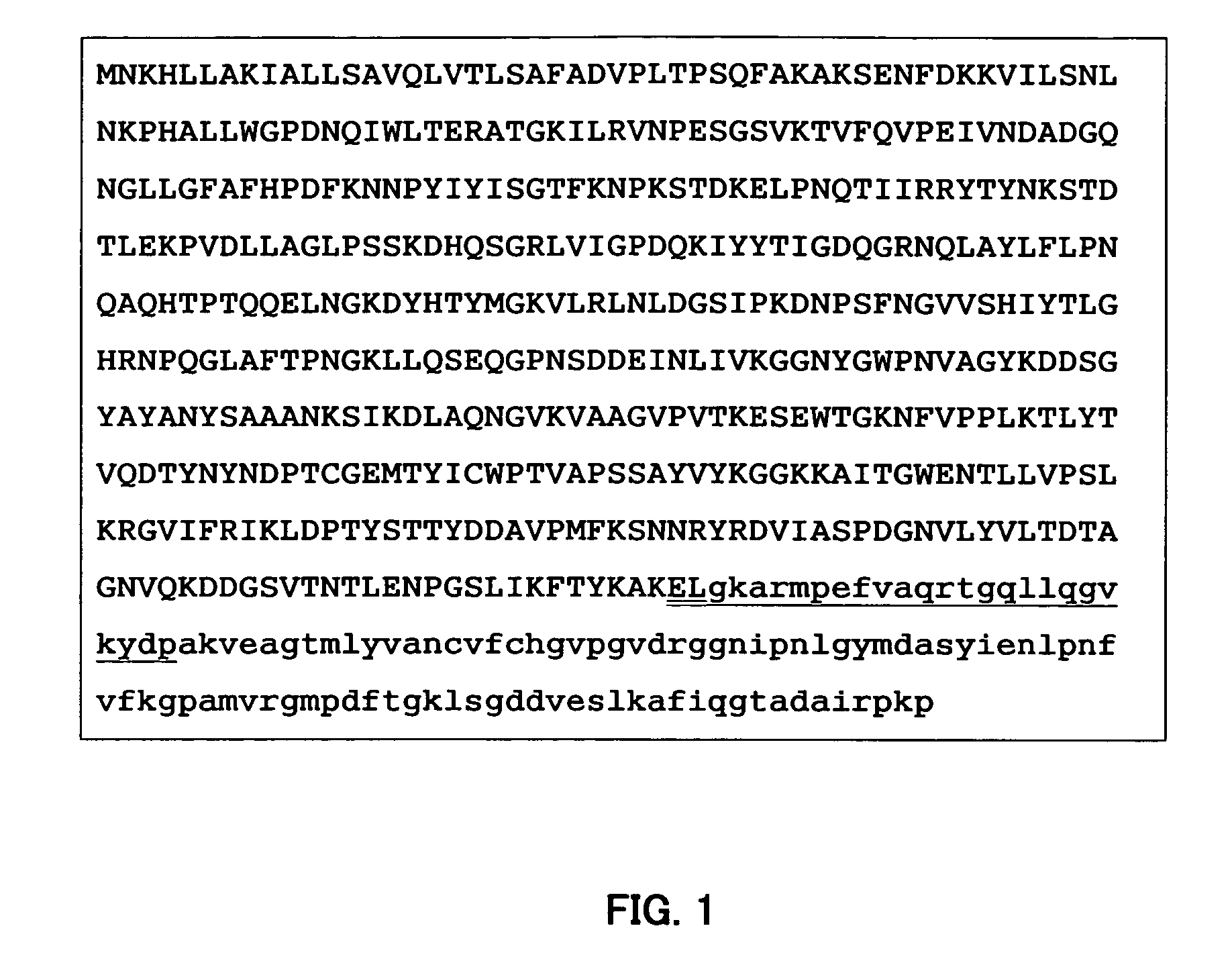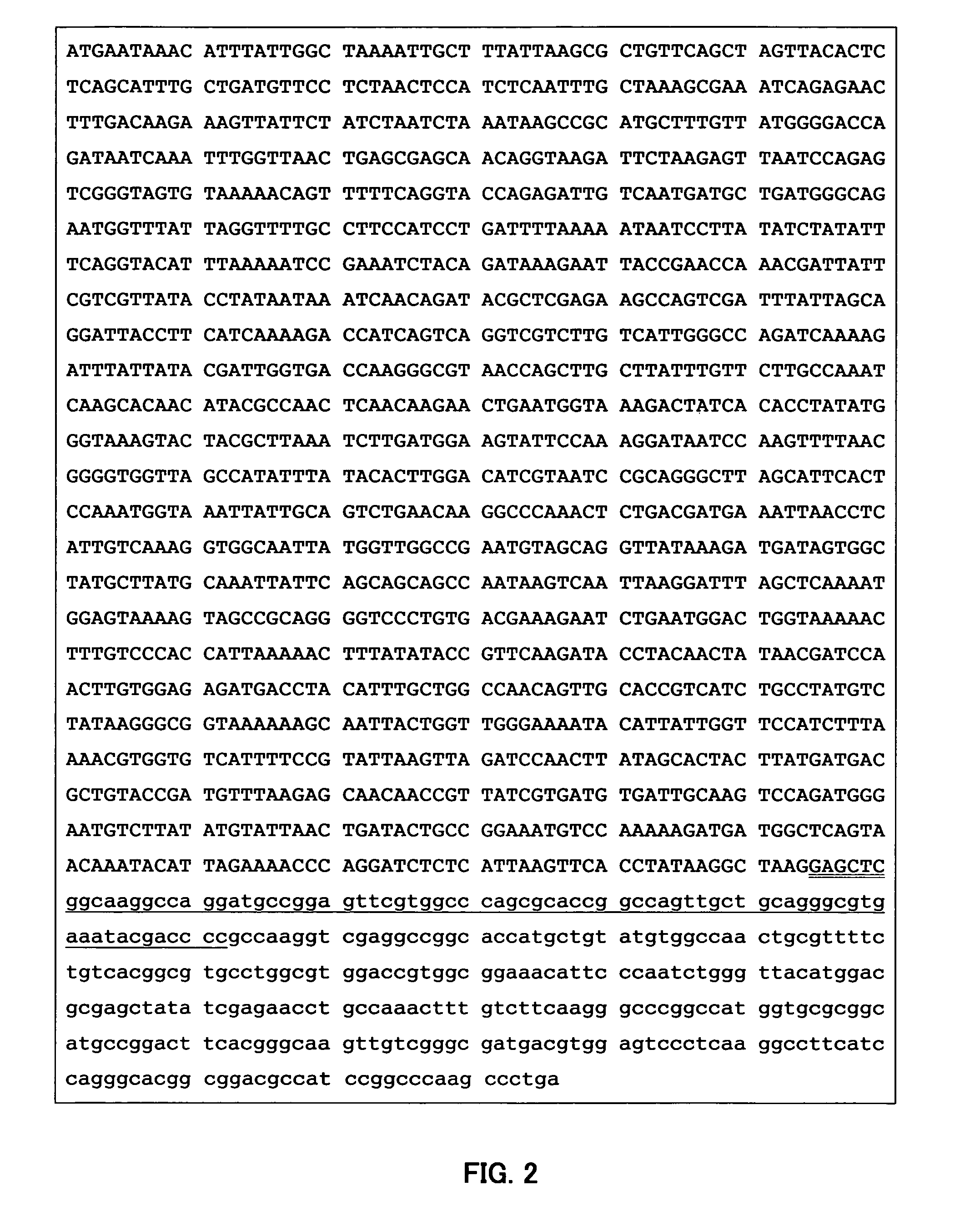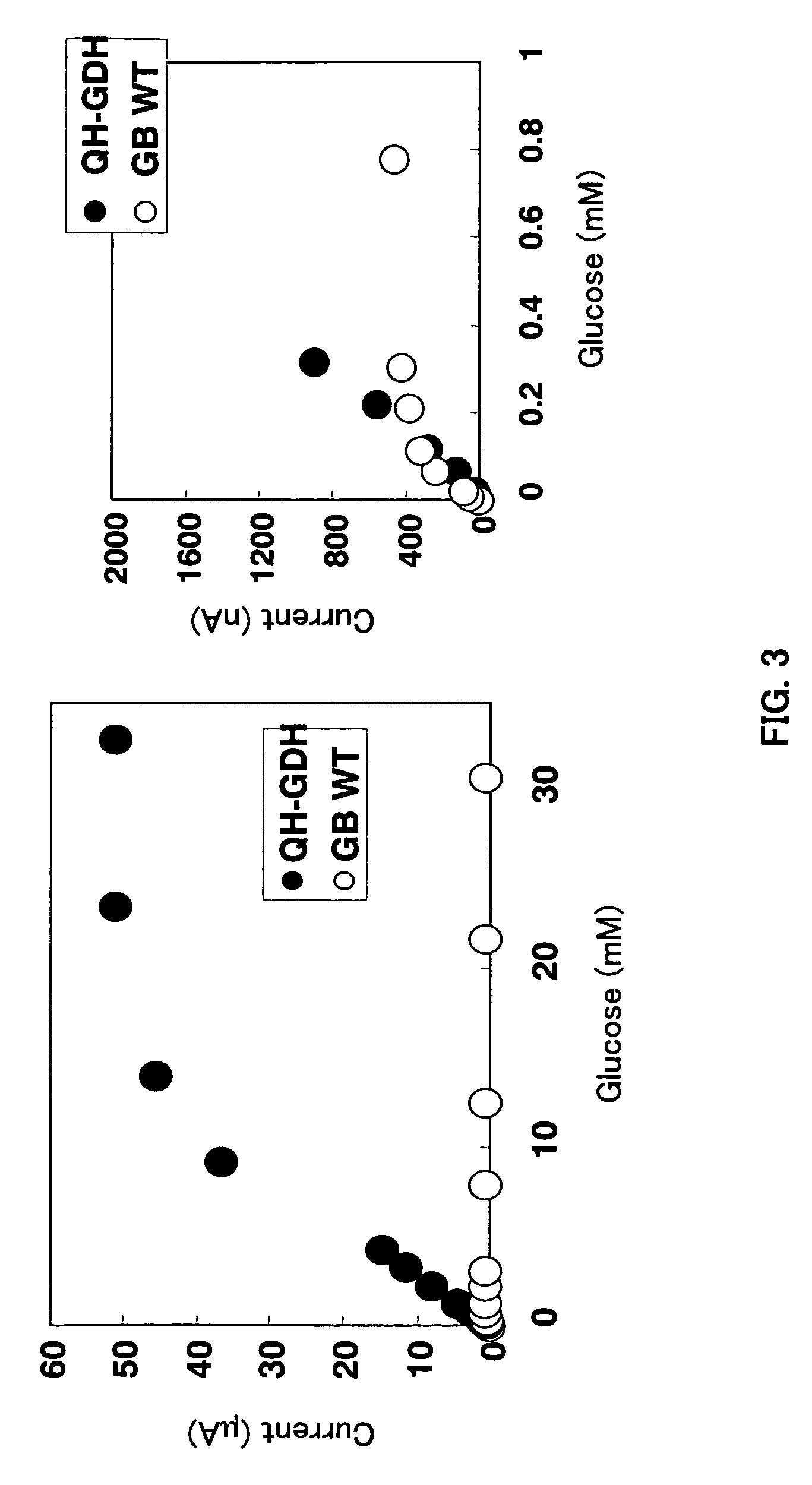Glucose dehydrogenase/cytochrome fusion protein
a technology of glucose dehydrogenase and cytochrome, which is applied in the field of glucose assay, can solve the problems of limited electrode performance, limited application of pqqgdh to a glucose sensor implanted in the body, and cos
- Summary
- Abstract
- Description
- Claims
- Application Information
AI Technical Summary
Benefits of technology
Problems solved by technology
Method used
Image
Examples
examples
[0043]The present invention will be described in more detail with reference to the examples below, however, these examples are not to be construed to limit the scope of the invention.
Construction of Expression Vector
[0044]The structural gene of PQQGDH (without a stop codon) and the electron transfer domain of QHEDH were amplified by the PCR method from the genomes of A. calcoaceticus LMD 79.41 and C. testosteroni ATCC 15667, respectively, using primers containing a restriction enzyme recognition site at the 5′-terminus. The primers used are as follows.
[0045]
gdhB;sense(SEQ ID NO: 3)5′-GGCCATGGATAAACATTTATTGGCTAAAATTGCTTTAT-3′antisense(SEQ ID NO: 4)5′-GGGGGAGCTCCTTAGCCTTATAGGTGAAC-3′qhedhcytc domain;sense(SEQ ID NO: 5)5′-GGGGGAGCTCGGCAAGGCCAGGATGCCGGA-3′antisense(SEQ ID NO: 6)5′-GGGGAAGCTTTCAGGGCTTGGGCCGGATGG-3′
[0046]These PCR products were inserted into the multicloning site of an expression vector, pTrc99A (Amersham Biosciences, Sweden) to prepare an expression vector pGBET. In this...
PUM
| Property | Measurement | Unit |
|---|---|---|
| molecular weight | aaaaa | aaaaa |
| pH | aaaaa | aaaaa |
| molecular weight | aaaaa | aaaaa |
Abstract
Description
Claims
Application Information
 Login to View More
Login to View More - R&D
- Intellectual Property
- Life Sciences
- Materials
- Tech Scout
- Unparalleled Data Quality
- Higher Quality Content
- 60% Fewer Hallucinations
Browse by: Latest US Patents, China's latest patents, Technical Efficacy Thesaurus, Application Domain, Technology Topic, Popular Technical Reports.
© 2025 PatSnap. All rights reserved.Legal|Privacy policy|Modern Slavery Act Transparency Statement|Sitemap|About US| Contact US: help@patsnap.com



